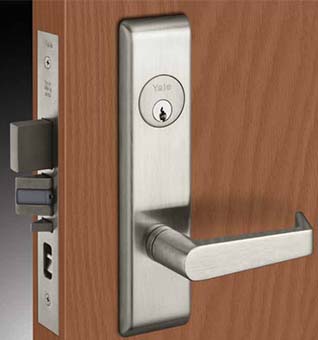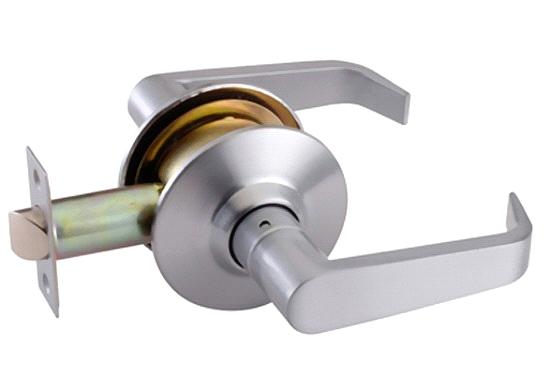 A common question in our industry is whether to use mortise locks or cylindrical locks on the doors within their facility. While it might not be a simply “this or that” question, I think I can give you some information that will point you in the right direction.
A common question in our industry is whether to use mortise locks or cylindrical locks on the doors within their facility. While it might not be a simply “this or that” question, I think I can give you some information that will point you in the right direction.
If you aren’t sure of the difference between a mortise lock and a cylindrical lock, you can check out these posts here and here. This should get you up to speed on the basics. Now that you have that out of the way, we can get down to the good stuff.
Mortise Locks
Functions
With a mortise lock, you have more functions available than you would if you went with a cylindrical lock. If options are something that are important to you, you want to stick with the mortise lock.
High Use Environment
If your facility is a retail facility and you see more than 100 customers a day on a busy day, you want something that’s durable. A mortise lock is sturdier than a cylindrical lock. Many people will argue this point, but typically they overlook a very important component—the door itself.
If a mortise lock is installed on a hollow metal door, both pieces of hardware are going to hold up fine because they’re both very sturdy. However, if you’re working with a mortise lock in a wooden door, you may run into some issues. A wooden door has to have so much cut out of it to accommodate the mortise lock, the door can split if too much pressure is applied (say from a kick or a shove) and the door will break open. This leads to the misconception that a mortise lock isn’t sturdy.
Separate Deadbolt and Latch
If you need a door that has a lock with a separate deadbolt and latch, only a mortise lock will work. Cylindrical locks don’t allow you to have these two options on the door as separate attachments.
Occupancy Indicators
Occupancy indicators are helpful in busy bathrooms and offer an added layer of confidence for customers. While a few cylindrical locks are now offering this feature, it’s still pretty rare. With mortise locks, the occupancy indicator is very common and quite popular.
Cylindrical Locks
Ease of Install
Unlike their counterpart, cylindrical locks are much easier to install. With a mortise lock you have to cut out part of the door to install the lock correctly. There’s none of that with a cylindrical lock. In fact, on average, a cylindrical lock only takes between 15 and 30 minutes to install. A mortise lock takes much longer.
Price
Cylindrical locks are much more affordable than mortise locks. If you have a facility with several doors, that might be all you need to hear before you make your decision. Mortise locks can add up quickly with the hardware alone. Once you add in labor for installation, you might just want to run for the hills and never look back once you see your bill.
Multiple Grades
Cylindrical locks come in multiple grades. This allows you to customize your doors according to their need. If you have a door that is really only used by you and maybe one other person, you could go with a lower grade cylindrical lock and save the higher grade ones for doors that will be used much more. You can’t get that option with a mortise lock. This too could save you more money because the price differs from grade to grade.
I hope this answers a few of your questions when it comes to mortise and cylindrical locks or at least gives you a starting point for information. If you’d like to learn more about these locks, don’t hesitate to contact us. We’d be happy to answer any questions you may have!
